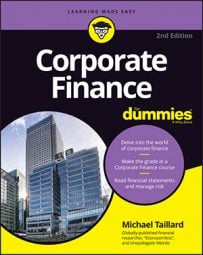Investors use the book value per share to determine the value of a share of stock when you take away all the earnings and investor speculation. In other words, if a company were to go out of business and liquidate everything it owns, how much would each share of stock in that company be worth? Here's what the book value per share looks like:
The following steps show you how to use this equation:
Find the total shareholders’ equity and preferred stock equity in the equity portion of the balance sheet and the total outstanding common shares on the balance sheet under the equity portion (or sometimes on the income statement).
Subtract the preferred stock equity from the total shareholders’ equity; the difference is the total common equity.
Divide the total common equity by the total outstanding common shares to get the book value per share.
The answer you get reflects exactly how much value in assets each share of stock is worth, based on the book value. It’s important to note that book value is the amount that a company paid for its assets and will likely be higher than the amount it can actually get during liquidation, which is called market value.
The book value per share can tell you what the company paid for everything, which would be the optimistic measure. Because the company must pay off all debt before the owners have any value at all, the book value per share shows what the company is worth to investors after all debt is paid off.

